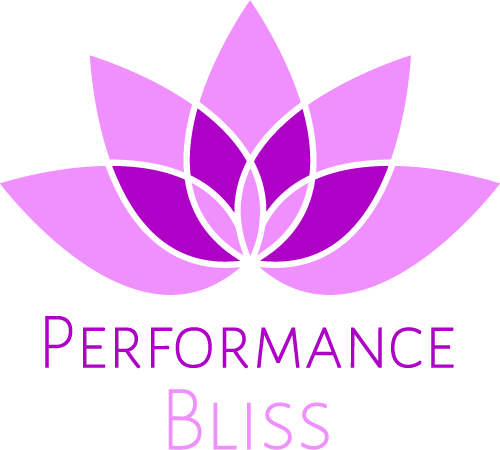The end of year performance review is a key opportunity to reflect on achievements, identify areas for growth, and set goals for the future. While many reviews rely on subjective opinions, integrating feedback and performance data can make reviews more objective, insightful, and meaningful. By doing so, managers and employees can focus on facts rather than assumptions, leading to better decision-making and career development.
In this article, we will explore how feedback and performance data enhance the year-end review process and provide actionable steps to make the most of these tools.
For companies looking to streamline their review process, PerformanceBliss offers a platform designed to gather feedback, analyze data, and create more effective reviews.
Why Use Data in Your End of Year Performance Review?
Performance reviews that rely on subjective opinions can lead to bias, misunderstandings, and missed opportunities. Data provides a more reliable foundation for discussions, ensuring that feedback is grounded in measurable outcomes.
Using data in your end of year performance review helps in several ways:
- Objectivity: Data removes guesswork, making evaluations more factual.
- Consistency: It provides a standard measure to compare employee performance over time.
- Transparency: Employees understand how their performance is being measured, leading to clearer expectations.
For example, instead of relying on general feedback like, “You need to improve your productivity,” data might show that the employee completed 80% of their tasks on time. This information is concrete and actionable, leading to more productive conversations.
Gathering Performance Data for the End of Year Performance Review
To effectively integrate data into the end of year performance review, you must first gather the right information. This data should be relevant to the employee’s role and responsibilities. Some key performance indicators (KPIs) to consider include:
- Task completion rates: How often does the employee complete tasks on time?
- Quality of work: Does the employee’s work meet company standards?
- Customer feedback: How satisfied are clients or customers with the employee’s work?
- Project outcomes: Did the employee contribute to successful project completion?
By collecting this data throughout the year, you can create a clearer picture of employee performance. This ensures that the year-end review covers not just recent work, but a broader range of contributions.
If tracking performance data seems challenging, PerformanceBliss offers a comprehensive tool to store and analyze employee data, making it easy to pull insights for reviews.
The Role of Feedback in the End of Year Performance Review
While data is essential, it doesn’t tell the whole story. Feedback from peers, supervisors, and even direct reports adds context to the numbers. Performance reviews should incorporate both quantitative data and qualitative feedback to provide a full picture of an employee’s performance.
Feedback during the end of year performance review serves several purposes:
- Contextualizing data: Feedback explains why certain performance metrics may look the way they do.
- Highlighting soft skills: Skills like communication, teamwork, and leadership often require qualitative feedback.
- Offering multiple perspectives: Feedback from different sources provides a more balanced evaluation.
For instance, an employee might have high task completion rates but still need improvement in collaboration. Feedback from colleagues can highlight areas for growth that data alone might not reveal.
PerformanceBliss makes it easy to collect 360-degree feedback from various team members, giving you a complete view of each employee’s performance.
How to Gather and Integrate Feedback
Gathering feedback for the end of year performance review requires a structured approach. It’s important to collect feedback from a range of sources and ask the right questions to get useful insights.
Here’s how to gather effective feedback:
- Ask for feedback from multiple sources: Collect input from peers, direct reports, and managers.
- Use a feedback template: Ask structured questions that focus on specific aspects of performance, such as communication, problem-solving, and teamwork.
- Request feedback early: Don’t wait until the last minute. Gathering feedback early gives people time to provide thoughtful responses.
Once you’ve gathered the feedback, integrate it with performance data. For example, if data shows an employee met most of their deadlines but struggled with communication, feedback from peers can shed light on specific areas of improvement.
With PerformanceBliss, you can easily gather and manage feedback from multiple sources, ensuring that all insights are captured for the review.
Making the End of Year Performance Review More Objective
One of the biggest challenges in performance reviews is avoiding bias. Subjective opinions, recency bias, and favoritism can all influence how an employee is evaluated. By using feedback and data together, you can create a more objective and fair review process.
Here’s how integrating data and feedback can help:
- Minimize recency bias: Data from the entire year ensures that the review isn’t overly influenced by recent events.
- Avoid the halo effect: Feedback and data together prevent one aspect of performance from overshadowing others.
- Support development plans: With clear data and feedback, you can set measurable goals and create actionable development plans.
For example, if data shows that an employee had a productive first half of the year but struggled in the latter half, you can focus on identifying the reasons for the change rather than making a judgment based solely on recent performance.
By using PerformanceBliss, you can ensure your reviews are free from bias by relying on data-driven insights and structured feedback.
Setting Goals Based on Feedback and Data
A meaningful end of year performance review isn’t just about looking back—it’s about planning for the future. Using the data and feedback collected, you can set SMART goals (Specific, Measurable, Achievable, Relevant, and Time-bound) for the upcoming year.
Data helps in goal setting by providing a benchmark for future performance. For example, if an employee completed 85% of tasks on time this year, a measurable goal might be to increase that to 90% next year.
Feedback also plays a role in identifying areas for growth. If feedback suggests the employee needs to improve communication skills, you can set a goal to attend a communication workshop or lead more team meetings.
PerformanceBliss allows managers to set and track goals throughout the year, ensuring that employees remain on target and get regular updates on their progress.
Ensuring Continuous Feedback Throughout the Year
A common mistake in the end of year performance review process is waiting until the end of the year to provide feedback. Continuous feedback throughout the year ensures employees know how they are performing in real-time and can make adjustments as needed.
Continuous feedback:
- Improves performance: Employees can address issues before they become major problems.
- Increases engagement: Regular feedback keeps employees motivated and aligned with company goals.
- Reduces review anxiety: Ongoing feedback makes the year-end review less stressful because there are no surprises.
Encourage managers to hold regular one-on-one meetings and provide ongoing feedback, so employees stay on track. This also makes the year-end review more about reflection and goal-setting than addressing problems.
With PerformanceBliss, you can implement a continuous feedback system that allows managers to regularly track and communicate employee progress.
Conclusion: Elevating the End of Year Performance Review
The end of year performance review is a valuable tool for both employees and managers. By integrating data and feedback, you can make the review process more objective, insightful, and actionable. Data provides measurable insights, while feedback adds context and highlights soft skills. Together, they help you create a comprehensive evaluation and set clear goals for the future.
If you’re looking for a way to streamline your performance reviews, PerformanceBliss offers a platform that combines feedback, data tracking, and goal-setting tools to ensure your reviews are meaningful and effective.
👇 Related Reads from Performance Bliss
If you found this helpful, you might also like:
- 🔗 How Friendly, Constructive Feedback Builds High-Performing Teams
- 🔗 Debunking Common Myths About Performance Review Software
- 🔗 Calculating the ROI of Modern Performance Review Software
- 🔗 Building a Feedback Culture in the Workplace
- 🔗 Performance Review Best Practices for 2025 and Beyond
- 🔗 The Ultimate Guide to Developer Performance Reviews


